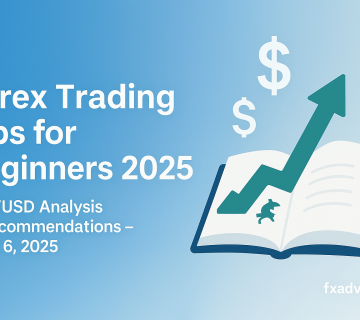Forex Trading Basics for Beginners
Introduction
Forex trading, or foreign exchange, is the global marketplace for exchanging national currencies. Operating 24/7, Forex is the largest financial market in the world, attracting traders from all backgrounds. This guide will cover essential aspects of Forex trading, including common terms, trading strategies, and risk management tips.
Understanding Forex Terminology
Forex has unique terms essential for any beginner to understand:
- Currency Pairs: In Forex, currencies are traded in pairs like EUR/USD. The first currency is the base, and the second is the quote. Each pair has its own market dynamics and trading times, depending on the currencies involved.
- Spread: The spread is the difference between the buy price (ask) and the sell price (bid) of a currency pair. Spreads are typically tight in Forex, making it a liquid market. However, during volatile market conditions, spreads can widen.
- Leverage: Leverage allows traders to control a larger position with a smaller amount of capital. For example, with a leverage of 1:100, a $1,000 deposit gives the trader control over $100,000 in the market. However, leverage magnifies both potential gains and losses.
- Pips: A pip (percentage in point) is the smallest unit of price movement in a currency pair. For most pairs, a pip is the fourth decimal place (0.0001). In pairs involving the Japanese Yen, it’s the second decimal place (0.01).
- Lot Size: In Forex, trades are placed in units called lots. A standard lot is 100,000 units of the base currency. Mini and micro-lots allow smaller trades, making Forex accessible for smaller accounts.
Forex Trading Basics for Beginners
How to Start Trading Forex
- Choose a Reliable Broker: Selecting the right broker is crucial. Look for one with a solid reputation, tight spreads, good customer service, and strong regulatory credentials. Brokers like FXCM, OANDA, and IG are popular for Forex trading.
- Open a Trading Account: Most brokers offer several types of accounts depending on your trading experience and capital. Demo accounts are ideal for beginners, as they allow trading with virtual money.
- Learn to Use Trading Platforms: Platforms like MetaTrader 4 and MetaTrader 5 are widely used. They offer various tools, including charts, indicators, and technical analysis tools. It’s essential to become familiar with these platforms before placing real trades.
- Set Up a Trading Plan: Define your goals, risk tolerance, and preferred strategies. A trading plan helps you stay disciplined and consistent. It should include when you’ll enter and exit trades, the amount of capital you’re willing to risk, and any specific strategies you’ll use.
Forex Trading Basics for Beginners
Basic Forex Trading Strategies for Beginners
Forex trading strategies vary, but here are some simple and effective ones for beginners:
- Trend Following: This strategy involves identifying the market trend and trading in that direction. Traders analyze charts to identify uptrends or downtrends. Tools like moving averages and trend lines help confirm trends. For instance, if the price is above the 200-day moving average, it indicates an uptrend.
- Range Trading: In range trading, the trader identifies a range-bound market, where the price bounces between support and resistance levels. The strategy involves buying at support and selling at resistance. This approach works best in stable markets without a strong trend.
- Breakout Strategy: Breakout trading involves identifying key price levels and waiting for the price to break above or below these levels. For example, if a currency pair has been trading in a tight range, a breakout can signal the start of a new trend. Breakouts are typically followed by increased volatility, offering potential profit opportunities.
- News Trading: News traders react to economic events like interest rate decisions, employment reports, and inflation data. Forex markets can be highly volatile during such events, which creates opportunities for traders. However, it also requires quick decision-making and a good understanding of the potential impact of various news events.
Forex Trading Basics for Beginners
Risk Management Tips
Effective risk management is essential for long-term success in Forex trading. Here are some key tips:
- Set Stop Losses: A stop-loss order automatically closes a trade when the price reaches a predetermined level. It’s a valuable tool for limiting losses and managing risk. Beginners should always use stop losses to avoid large losses on a single trade.
- Position Sizing: Proper position sizing means not risking too much on any one trade. Most experienced traders recommend risking no more than 1-2% of your capital per trade. This approach helps protect your account from significant losses.
- Diversification: Don’t put all your funds into one currency pair. By diversifying, you can spread risk across multiple pairs, reducing the impact of a negative move in any one position.
- Risk-Reward Ratio: Aim for trades with a favorable risk-reward ratio. For instance, a ratio of 1:3 means you’re aiming to make $3 for every $1 you risk. This helps ensure that even if some trades are losses, your winning trades more than compensate.
Conclusion
Mastering Forex basics is crucial for any beginner looking to succeed in this fast-paced market. Understanding essential terms, applying basic strategies, and implementing sound risk management techniques can greatly enhance your trading journey. Remember, Forex trading requires continuous learning and adaptation. Start with a demo account, develop your skills, and only move to real trading when you feel confident in your strategy.
The Best Forex Trading Platforms of 2024
Forex Tips: 5 Forex Tips for Beginners to Start Trading Confidently













